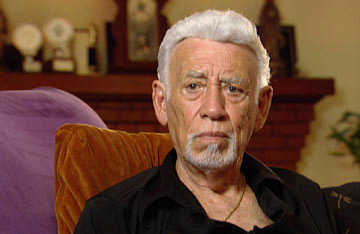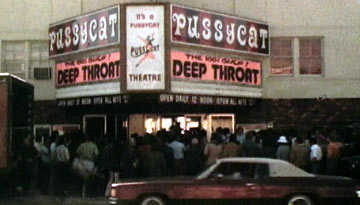

Given the ubiquity and relative mainstreaming of porn in today's society, it's interesting to watch Inside Deep Throat, which looks at the cultural impact that the 1972 original. It's hard to believe that only a little over thirty years ago, porn was an extremely taboo topic. Deep Throat changed all this. This was the first film that ordinary people went to see. Although it only cost $25K and 6 days to produce, it played for years and supposedly grossed upwards of $600 million dollars (the filmmakers and the Los Angeles Times are currently having an amusing argument over the veracity of these numbers). Filmmakers Fenton Bailey and Randy Barbato (Party Monster, The Eyes of Tammy Faye) take give Deep Throat a reverential treatment, interviewing a wealth of people (everybody from Larry Flynt and Al Goldstein to Linda Gurley Brown, Susan Brownmiller, Bill Maher, Norman Mailer, Wes Craven, and Alan Dershowitz) about the making of the film and the effects it had on society at large. It succeeds in its first goal, and stretches a bit far for its second.
According to an amusing Lenny Camp, everything about the film was "shit." Gerard Damiano was looking to make a porn film when he stumbled upon Linda Lovelace (real name Linda Boreman), who had the ability to take a certain part of the male anatomy down her throat. Damiano immediately came up with the title, and cast production assistant Harry Reems across her and shot the film. Most people agreed that the film itself wasn't very good. The title act (shown here for a few seconds and the primary reason for the NC-17 rating) amazed people. This was a time when sex was still taboo. People like Hugh Hefner, Camille Paglia, Dr. Ruth Westheimer, and Erica Jong all comment about the effect the film had on the public. People went to see it in droves. States tried to ban it, and Reems, although he was only an actor, was prosecuted (after Lovelace and Damiano received immunity). Lovelace famously went on to renounce her career in porn and follow the path of feminism, before embracing porn again later in life. The filmmaker don't come to any overt conclusions about her, but it's clear she's not very credible.
Bailey and Barbato and many of their subjects make frequent allusion to mob ties to the production. After the film started raking in cash, Damiano's partners "bought him out." Damiano and others are still reluctant to talk about what they know, and the filmmakers really drop the ball in terms of trying to shed light on this aspect of the film. They give brief mention of the two principal suspects and how they accumulated money, but aside from that, nothing. Much of the film is a highly interesting, and entertaining "where are they now" type picture that tracks Reems and others as the decades wore on.
Some of the people interviewed talk about how the filmmakers wanted to do something important. Damiano speaks about how he wanted to bring porn into the mainstream, but he comes off less as a dreamer and more as deluded. It feels like he's looking at the past and reminiscing what he wished had happened. Deep Throat simply came out at the right time, and as a result has a part in the cultural history of America. The sixties were over, and feminism and morality were on the rise. Nixon famously commissioned a government study that concluded pornography had no adverse affect on adults (the government discarded it). Government crackdowns on porn theaters drove adult films to the home market (particularly VHS), where sales took off. If not this film, another would have easily taken its place. Was Deep Throat responsible for today's multibillion-dollar porn industry? It probably had a part, but the same thing would have happened eventually. Looking at the film in light of society changes in morality is what makes it interesting. Ascribing these changes to the film is a stretch.